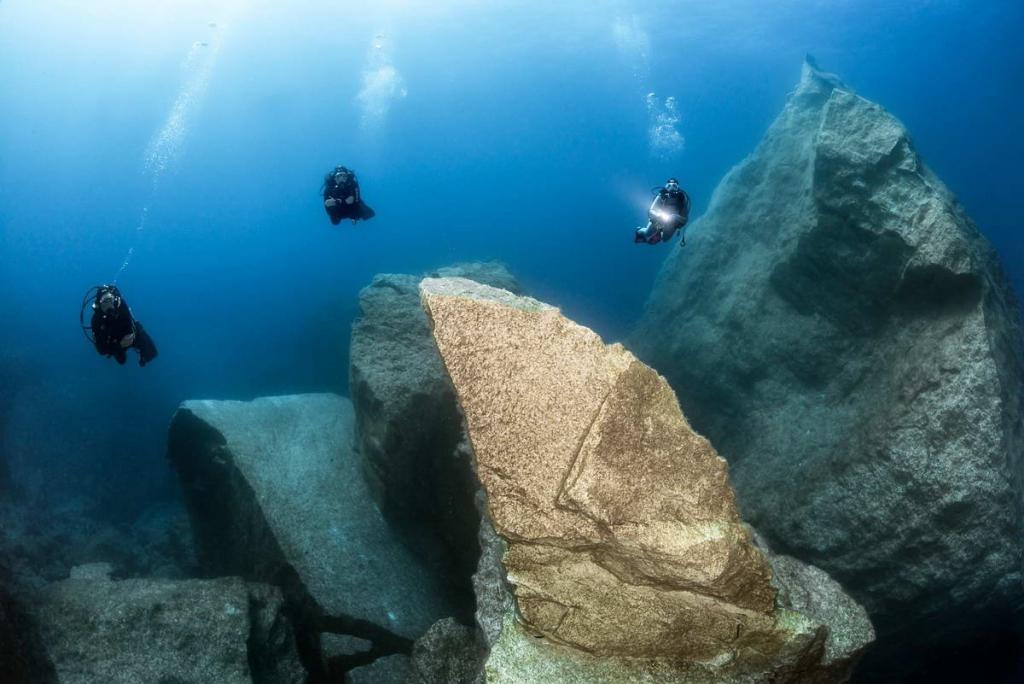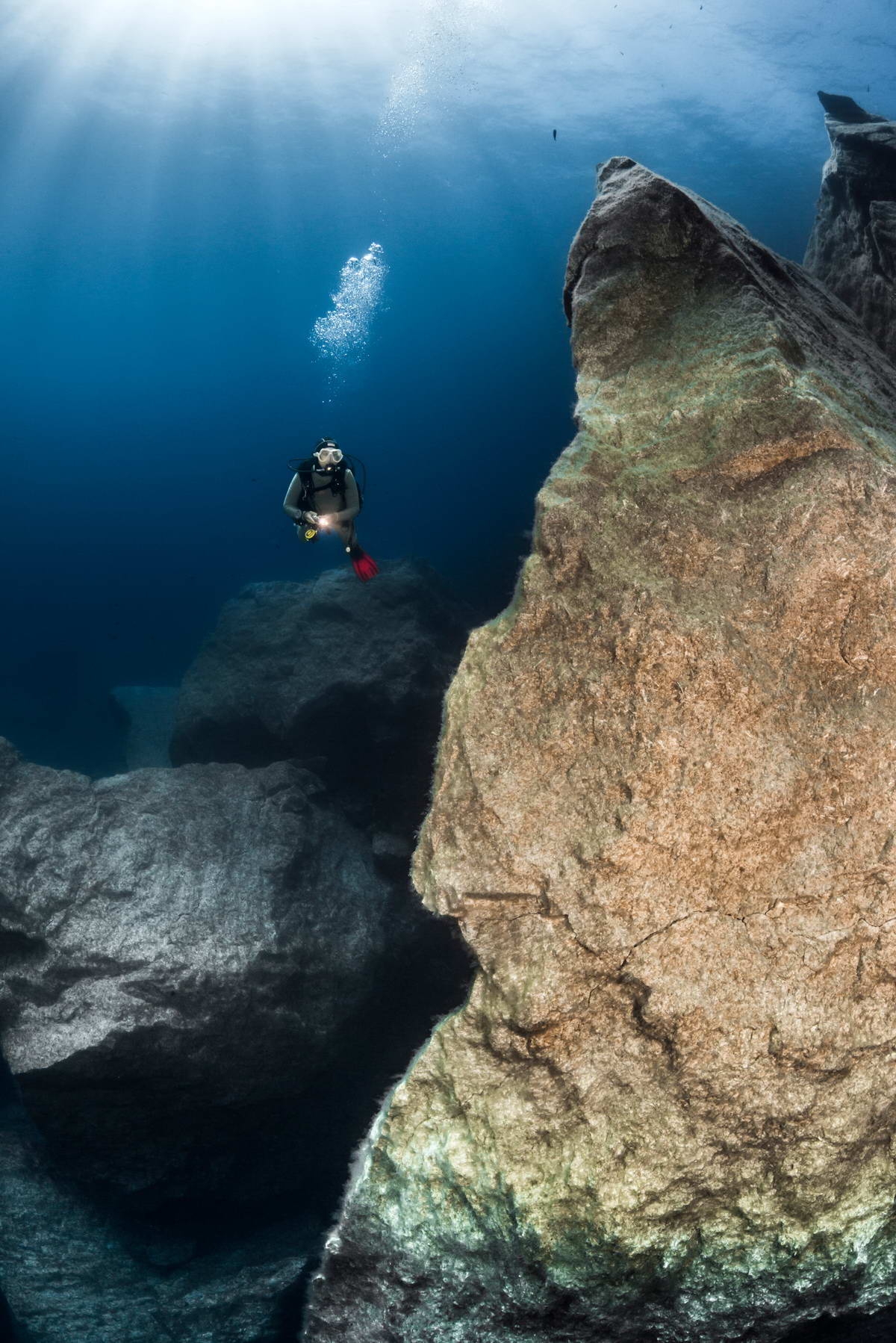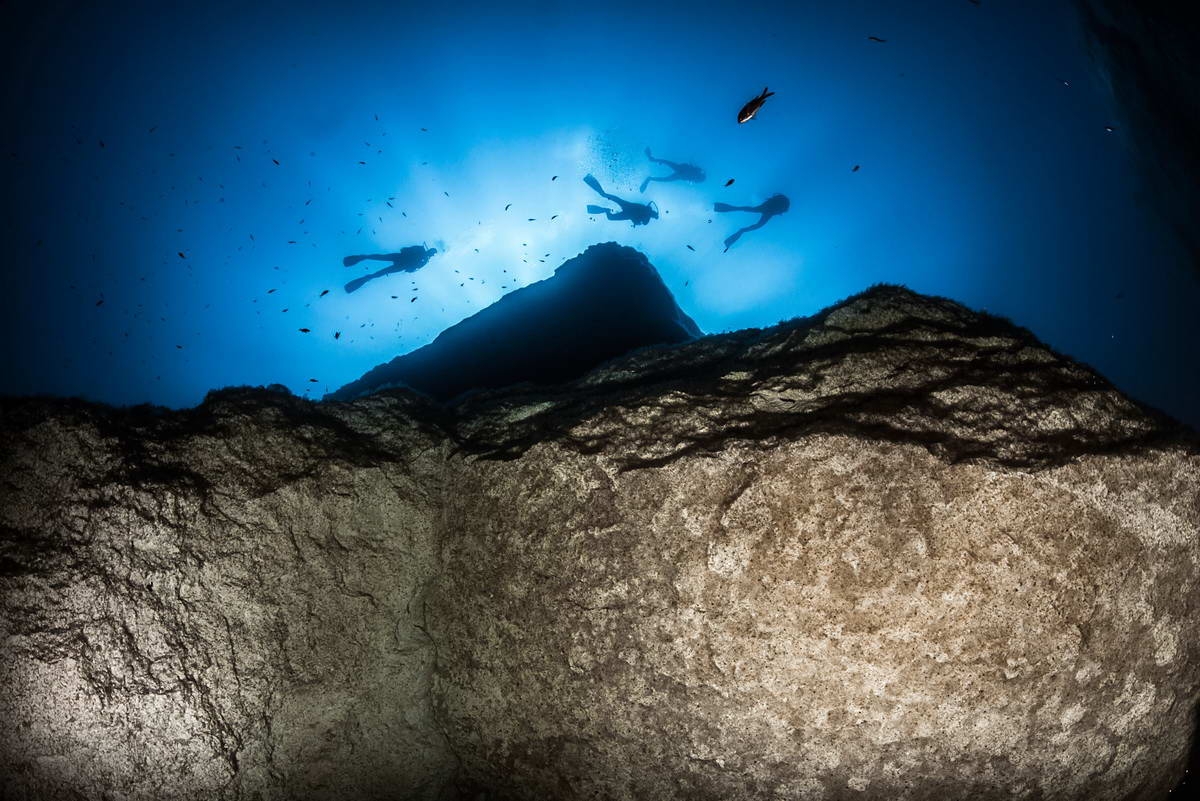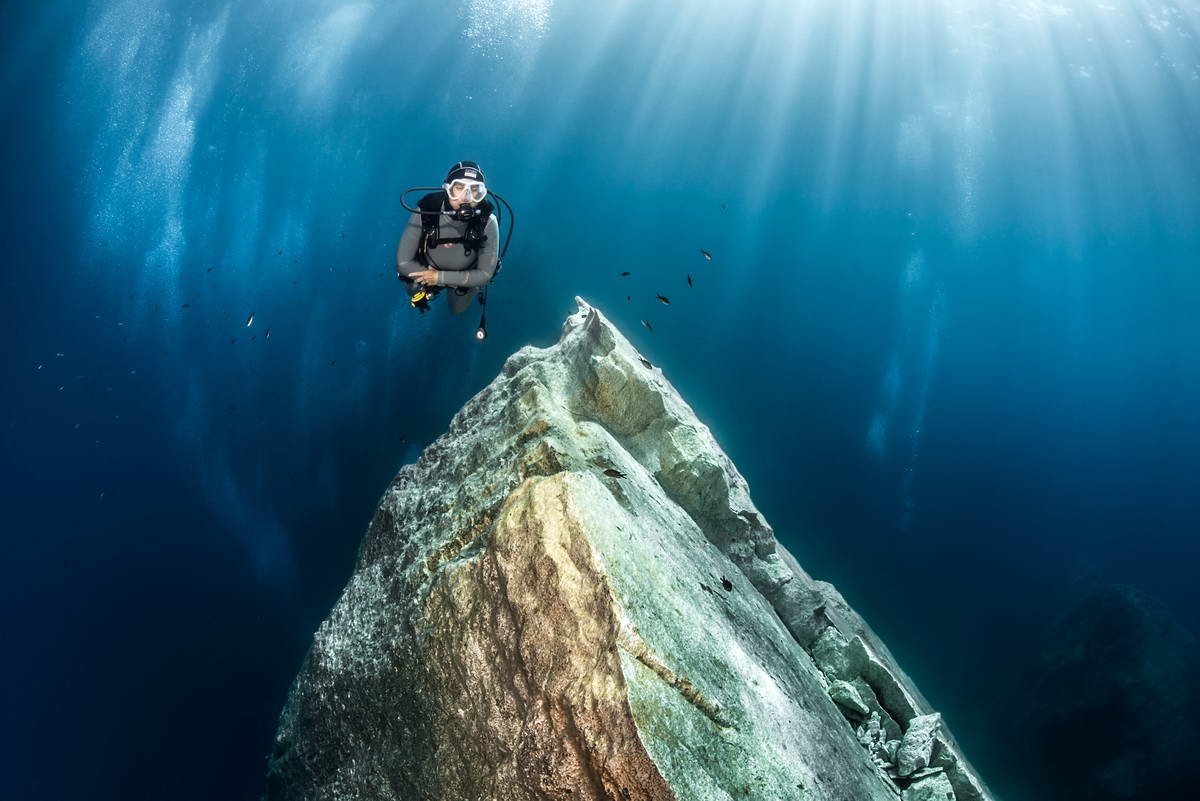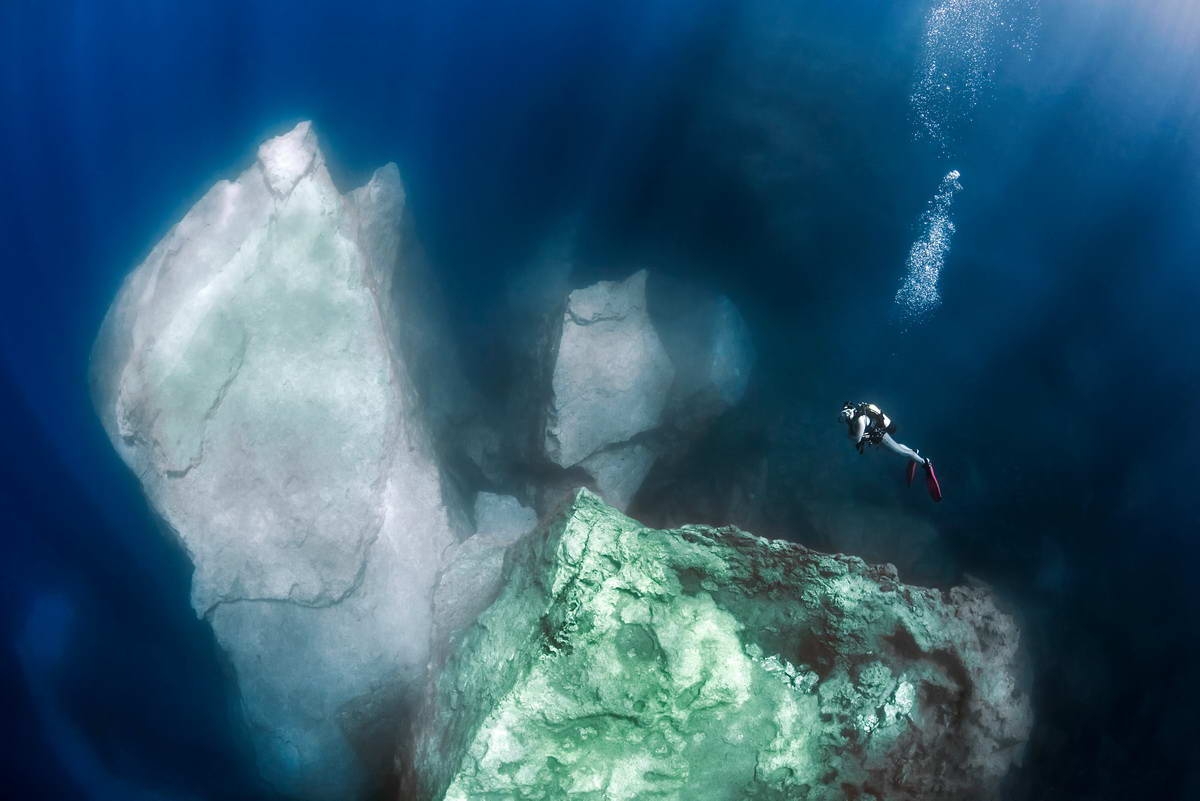Collapsed Azure Window: A new dive site is born
September 6, 2017 One of the hottest dive sites in the MediterraneanOn 8 March 2017, just before 10am, the Gozo’s world-famous landmark, the Azure Window, collapsed into the sea. The stone structure, weighing many thousand tons, had become unstable over the years and could no longer withstand the stormy sea.
That day – March 8th – became known as a black day. Tourists regarded the collapse as a great loss – but not so for divers! All divers who had dived there unanimously say that a great new dive spot had been created. Indeed, like a phoenix rising from the flames, the Azure Window has been reborn as the Azure Boulders – and it is one of the hottest dive sites in the Mediterranean!
Photos show massive rock blocks, cracked, sharp-edged and scattered over the soil of the Mediterranean where the great limestone formation once stood. In some places, marine life has already begun to take over the new underwater formation.
"The rocks look really impressive," said Gorden Klisch, a dive center manager in Malta. "Without a visual clue, these formations look like small rock fragments, but they are really gigantic. Additionally, the entire structure is quite complicated with canyons and narrow passages, so the new structure can be explored over several dives without becoming bored. The depth range is also quite large (from 3 to over 40m), so divers with different qualifications – from beginners to professionals will be satisfied."
Divers enter the Azure Boulders via the Blue Hole. In the direction of the former stone arch, you can find large boulders that reach almost to the surface from a depth of three metres. These were part of the bridge of the Azure Window. The main base which had fallen in the south-western direction now builds a fantastic underwater landscape.
Some of these boulders look like mountain peaks, which are surrounded by more stone structures to a depth of about 30 metres. It almost looks as if a high alpine scene had been sunk into the sea.
The collapse of the Azure Window has created many tunnels. However, diving in these tunnels could be very dangerous and is not advised at the moment. The structures are still unstable, and are prone to further "rearrangement" after the winter storms.
On the outside of the new dive site (in the western direction), large chunks of rocks have fallen quite perpendicularly to over 40 metres' depth (see sketch) and this promises divers an unforgettable experience in steep wall diving.
Many tourists still complain about the loss of the iconic landmark. However, for divers, its collapse has been beneficial, with fewer tourists at the stretch from the coast up to the Inland Sea and this translates into more parking spaces.
More importantly, a new fascinating underwater playground with plenty of hiding places for flora and fauna has been born, through the collapse of the Azure Windows.
See also: Gozo Divespot: Azure Window/Azure Boulders
